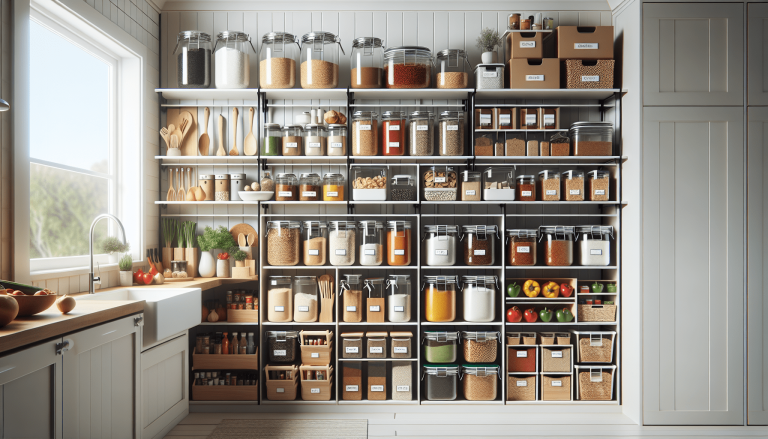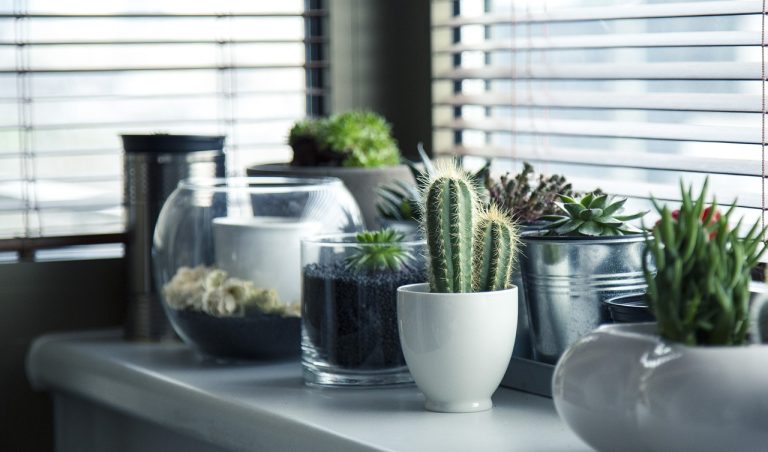So you’ve got the green thumb and a passion for gardening, but have you ever thought about making your garden more sustainable? It’s not just about growing beautiful plants, it’s about taking care of Mother Earth too! In this article, we will explore some simple yet effective tips that can help you transform your garden into an eco-friendly paradise. From composting to water conservation, you’ll discover how small changes can make a big difference in creating a sustainable garden that you can be proud of.
Table of Contents
ToggleWater Conservation
Collect rainwater
One of the most effective ways to conserve water in your garden is by collecting rainwater. Set up a rain barrel or a larger rainwater harvesting system to capture the rain that falls on your roof. This way, you can use this collected water to irrigate your plants instead of relying solely on tap water. Not only does this help to reduce your water usage, but it also allows you to provide your plants with pure, chemical-free water that they prefer.
Use drip irrigation
Another way to conserve water in your garden is by using drip irrigation. Unlike traditional sprinklers that can waste water through evaporation and runoff, drip irrigation delivers water directly to the roots of your plants. This targeted watering method ensures that the water goes where it is needed most, minimizing water loss and maximizing plant hydration. Additionally, drip irrigation systems can be easily regulated, allowing you to efficiently control the amount of water your plants receive.
Mulch around plants
Mulching is an excellent technique to conserve water and improve soil health in your garden. By adding a layer of organic mulch, such as wood chips or straw, around your plants, you can help prevent evaporation and retain moisture in the soil. Mulch acts as a protective barrier, shielding the soil from direct sunlight, reducing weed growth, and maintaining a more even soil temperature. This not only helps to conserve water, but it also promotes healthier plants by providing a stable and nourishing environment for their roots.
Soil Health
Compost
Composting is a crucial aspect of sustainable gardening. By composting kitchen scraps, yard waste, and other organic materials, you can create nutrient-rich compost that enriches your soil and enhances its health. Compost improves soil structure, enhances its ability to retain moisture, and provides essential nutrients to your plants. Whether you opt for a compost bin or a compost pile, make sure to include a mix of green and brown materials, turn the compost regularly, and maintain the right moisture levels to facilitate the decomposition process.
Practice crop rotation
Crop rotation is a technique used to improve soil health and minimize pest and disease problems. By alternating the types of crops you grow in different areas of your garden each year, you can break pest and disease cycles and prevent the buildup of specific pathogens in the soil. For example, if you grow tomatoes in one area one year, plant a different crop like beans or lettuce in that area the following year. This practice helps maintain soil fertility and reduces the need for chemical interventions.
Avoid synthetic fertilizers
In sustainable gardening, it is best to avoid synthetic fertilizers that can harm beneficial organisms and pollute water sources. Instead, focus on using organic fertilizers or amendments such as compost, aged manure, or natural mineral sources like rock phosphate and kelp meal. These organic options provide a slow release of nutrients, improve soil structure, and promote healthy microbial activity, fostering a thriving ecosystem in your soil. By nurturing your soil with organic matter, you can cultivate bountiful and healthy plants while minimizing negative ecological impacts.
Native Plants
Choose native species
When selecting plants for your garden, consider choosing native species. Native plants have adapted to the local environment, making them better equipped to withstand the climate, pests, and diseases in your area. Native species also provide crucial habitat and food sources for native wildlife, promoting biodiversity and ecosystem balance. By incorporating native plants into your garden, you can create a natural haven for birds, butterflies, and other pollinators while requiring less maintenance and resources to keep them thriving.
Promote biodiversity
Encouraging biodiversity in your garden is an essential element of sustainable gardening. By cultivating a diverse range of plants, you can attract a variety of beneficial insects and pollinators, creating a balanced ecosystem that naturally controls pests and enhances plant health. Incorporate plants with different heights, colors, and flowering seasons to provide continuous food sources and shelter for wildlife. Additionally, consider creating small water features, bird feeders, and nesting boxes to further support wildlife in your garden.
Plant pollinator-friendly flowers
Pollinators such as bees, butterflies, and hummingbirds play a crucial role in plant reproduction and the overall health of our ecosystems. To support these important creatures, include a variety of pollinator-friendly flowers in your garden. Choose plants that provide nectar and pollen throughout the year, ensuring a continuous food supply for pollinators. Native wildflowers, herbs like lavender and mint, and flowering shrubs such as butterfly bush and azaleas are excellent choices for attracting and nourishing pollinators.
Organic Pest Control
Attract beneficial insects
In sustainable gardening, it’s essential to harness the power of nature to control pests. One effective method is attracting beneficial insects to your garden. These insects, including ladybugs, lacewings, and parasitic wasps, feast on garden pests, helping to keep their populations in check. To attract beneficial insects, include a variety of flowering plants in your garden, such as daisies, marigolds, and yarrow, which provide a source of nectar and pollen. Additionally, consider installing insect hotels or creating small brush piles to provide shelter for these helpful allies.
Use natural repellents
When faced with specific pests, it’s best to utilize natural repellents instead of resorting to chemical pesticides. Many common pantry items and plants can act as natural pest deterrents. For example, garlic, onion, and hot pepper sprays can discourage pests like aphids and caterpillars. Planting aromatic herbs like rosemary, basil, and mint can also repel certain insects. Research natural pest deterrents for the specific pests you are dealing with, and experiment to find the most effective solutions for your garden.
Handpick pests
For small-scale pest infestations, handpicking pests can be an effective and environmentally friendly method of control. Wear gloves and simply remove pests by hand, dropping them into a bucket of soapy water or crushing them. This approach is particularly helpful for larger insects, caterpillars, and snails. Regular monitoring and prompt action can prevent pest populations from spiraling out of control and causing irreversible damage to your plants.
Companion Planting
Plant compatible crops together
Companion planting is a sustainable gardening technique that involves growing compatible crops together, benefiting each other in various ways. Some plants have natural synergies that can help repel pests, enhance growth, or improve flavor. For instance, planting basil near tomatoes can help deter tomato hornworms, while marigolds can repel nematodes when planted with many different vegetables. Take advantage of companion planting charts and guides to discover which plants work well together and experiment with different combinations in your garden.
Repel pests with certain plant combinations
Certain plant combinations can help naturally repel pests, reducing the need for chemical interventions. For example, planting aromatic herbs like thyme, sage, or lavender near vulnerable plants can deter pests with their strong scents. The scent masks the attractiveness of the host plants and confuses pests, making it difficult for them to locate their target. Additionally, interplanting pest-resistant plants, such as onions or chives, among susceptible vegetables can create a protective barrier, making it harder for pests to find and attack their preferred plants.
Maximize garden space and yield
Companion planting also allows you to maximize your garden space and increase your overall yield. By combining plants that have different growth habits, such as tall plants with shallow-rooted or ground-covering crops, you can make efficient use of vertical and horizontal space. For example, growing pole beans next to corn provides support for the beans while taking advantage of the cornstalks as a natural trellis. This practice enables you to grow a greater variety of plants in a limited space, making your garden more productive and diverse.
Crop Selection
Choose climate-appropriate crops
Selecting crops that are well-suited to your local climate is vital for sustainable gardening. Plants that are adapted to your climate require fewer resources and are more likely to thrive. Research the optimal planting times, temperature tolerances, and water requirements for different crops in your region. Consider consulting with local gardening experts or using online resources to guide your crop selection. By choosing climate-appropriate plants, you can avoid unnecessary struggles and help conserve water and energy in your garden.
Consider heirloom varieties
When choosing the specific varieties of crops to grow in your garden, consider opting for heirloom varieties. Heirloom plants are open-pollinated, meaning they have been carefully preserved and passed down through generations without genetic modification. These plants often have more diverse and robust genetics, making them better adapted to local conditions and more resistant to pests and diseases. Additionally, growing heirloom varieties helps preserve biodiversity and cultural heritage while ensuring a more sustainable and resilient food system.
Opt for plants with low water requirements
Conserving water is a key aspect of sustainable gardening, so it’s wise to choose plants with low water requirements whenever possible. Many native plants and drought-tolerant species are naturally adapted to thrive in arid conditions and require minimal watering once established. Consider incorporating succulents, Mediterranean herbs, and native grasses into your landscape, as they are all excellent options for water-wise gardening. By shifting towards plants that are suited to your local climate, you can significantly reduce water usage in your garden.
Weed Management
Mulch to suppress weeds
Weeds not only compete with your desired plants for water and nutrients but can also disrupt the balance of your garden ecosystem. A sustainable way to manage weeds is by mulching. Apply a layer of organic mulch, such as straw, wood chips, or shredded leaves, around your plants to suppress weed growth. The mulch acts as a physical barrier, limiting sunlight exposure and preventing weed seeds from germinating. Additionally, as the mulch decomposes, it enriches the soil and supports beneficial microbial activity, further enhancing the health of your garden.
Hand weed regularly
While mulching helps minimize weed growth, it’s essential to dedicate time to regular hand weeding. By taking a proactive approach and removing weeds by hand before they have a chance to spread and set seed, you can prevent potential weed problems from escalating. Use a hand trowel, hoe, or your gloved hands to carefully remove weeds, ensuring that you remove the entire root system. Regularly monitoring your garden for weed growth and staying on top of manual weed control will keep your garden healthy and reduce the need for chemical herbicides.
Avoid chemical herbicides
In sustainable gardening, it’s best to avoid the use of chemical herbicides whenever possible. Chemical herbicides can have long-term negative effects on the environment, including soil degradation, water pollution, and harm to beneficial organisms. Instead, focus on utilizing eco-friendly and manual weed management strategies. Mulching, hand weeding, and maintaining a healthy garden ecosystem are effective and sustainable alternatives that allow you to maintain a weed-free garden without compromising the health of your garden or the environment.
Conserving Energy
Use manual tools
To minimize energy consumption in your garden, consider using manual tools instead of relying solely on power tools. Manual tools such as hand pruners, shears, and shovels are not only more eco-friendly but also provide a quieter and more tranquil gardening experience. While power tools like lawnmowers and chainsaws are necessary for some tasks, incorporating manual tools whenever possible can significantly reduce your overall energy consumption and carbon footprint.
Prioritize natural sunlight
Harnessing the power of sunlight is not only essential for plant growth but also helps conserve energy. Properly plan and design your garden to maximize natural sunlight exposure for your plants. Position taller plants or structures strategically to provide shade for sun-sensitive crops during the hottest parts of the day. Additionally, consider using reflective surfaces or mirrors to redirect sunlight into shadier areas of your garden. By optimizing natural sunlight, you can reduce the need for artificial lighting and save on energy costs.
Opt for eco-friendly garden accessories
When choosing garden accessories, opt for eco-friendly options to further reduce your energy consumption and environmental impact. For example, use solar-powered outdoor lights to illuminate your garden at night instead of traditional electric lights. Switch to rechargeable batteries for garden tools and devices. Consider using biodegradable plant pots or recycled materials for raised beds and garden structures. By prioritizing eco-friendly alternatives, you can actively contribute to sustainable gardening practices and make a positive difference for the planet.
Wildlife Considerations
Provide habitat for beneficial wildlife
One of the joys of sustainable gardening is creating a harmonious environment that supports beneficial wildlife. Incorporate features in your garden that provide habitat for birds, bees, butterflies, and other beneficial creatures. Plant native trees, shrubs, and flowering plants that provide food, shelter, and nesting sites. Create small ponds or birdbaths for wildlife to drink and bathe. Install birdhouses, bat boxes, or insect hotels to offer additional nesting spaces. By providing habitat for beneficial wildlife, you can invite natural pest control agents into your garden and promote a thriving ecosystem.
Create nesting areas for birds
Birds are not only beautiful to watch but also play a vital role in controlling garden pests. Encourage bird populations in your garden by adding nesting areas. Install birdhouses or build simple nesting platforms using natural materials such as twigs and branches. Place these structures in quiet, sheltered areas, away from potential predators. Different species have varying preferences for nesting locations and entrance sizes, so research the specific needs of birds in your area to create suitable and inviting nesting spaces.
Minimize pesticide use
To support wildlife in your garden, it is crucial to minimize pesticide use. Even organic pesticides can harm beneficial insects and disrupt the natural balance of your garden ecosystem. Instead, focus on implementing other pest management strategies like beneficial insect attraction, companion planting, and regular monitoring for pests. By minimizing pesticide use, you provide a safer and healthier environment for beneficial insects, birds, and other wildlife, ensuring a thriving and balanced ecosystem in your garden.
Seasonal Gardening
Adapt gardening practices to each season
Sustainable gardening involves adapting your practices to the changing seasons. Different times of the year require different gardening techniques and tasks. Research and learn about the gardening practices appropriate for each season in your region. Adjust your planting schedules, watering routines, and fertilization methods accordingly. By aligning your gardening practices with seasonal changes, you can optimize plant growth, minimize resource waste, and foster a healthy and productive garden throughout the year.
Prepare for frost or extreme heat
Extreme weather conditions like frost or extreme heat can pose challenges to your garden. Be prepared by taking preventative measures to protect your plants during such events. Before the first frost, cover vulnerable plants with frost blankets or row covers to shield them from the cold. During heatwaves, provide shade and extra water to help plants cope with the high temperatures. By proactively preparing for extreme weather events, you can mitigate potential damage and support your plants’ resilience.
Plant cover crops during fall and winter
When the growing season comes to an end, consider planting cover crops in your garden during fall and winter. Cover crops, also known as green manure, are plants that protect and improve the soil during the offseason. Legumes like clover and winter rye are excellent cover crop choices as they fix nitrogen in the soil and add organic matter when tilled or incorporated in the spring. Cover crops help prevent soil erosion, suppress weed growth, and improve soil fertility, ensuring your garden beds stay healthy and productive year-round.
In conclusion, sustainable gardening encompasses a variety of techniques and practices that prioritize environmental stewardship, minimize resource consumption, and promote a thriving garden ecosystem. By incorporating water conservation methods, nurturing soil health, selecting native plants, implementing organic pest control, practicing companion planting, choosing climate-appropriate crops, managing weeds sustainably, conserving energy, considering wildlife, and adapting gardening practices to each season, you can create a garden that is both beautiful and environmentally friendly. With a little dedication and a friendly approach to nature, you can enjoy the many benefits of sustainable gardening while actively contributing to a healthier planet. So grab your gardening gloves, get outside, and start making a positive impact with your sustainable garden!









